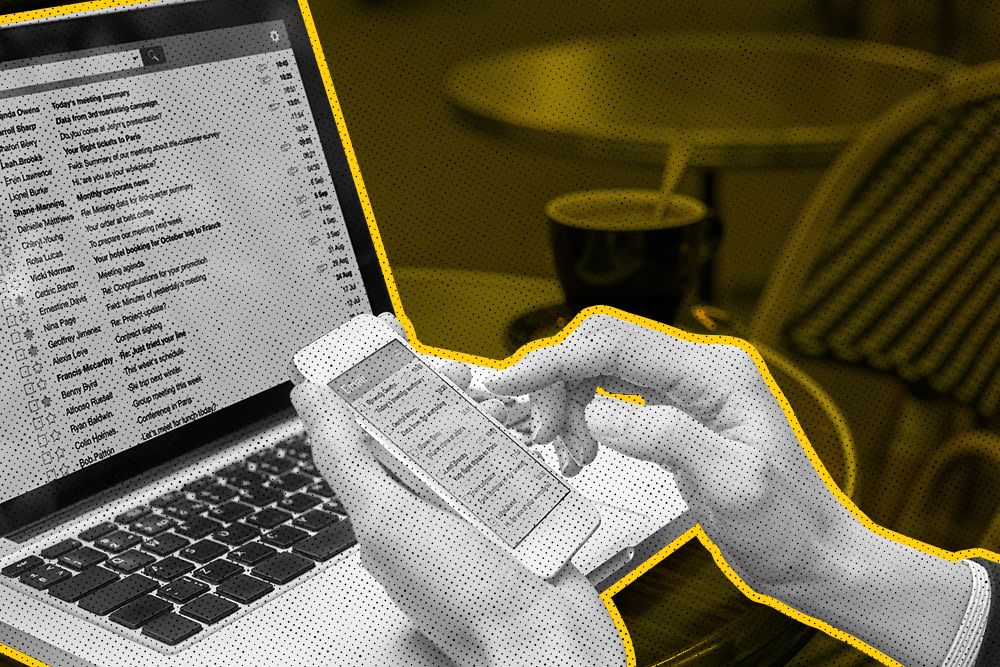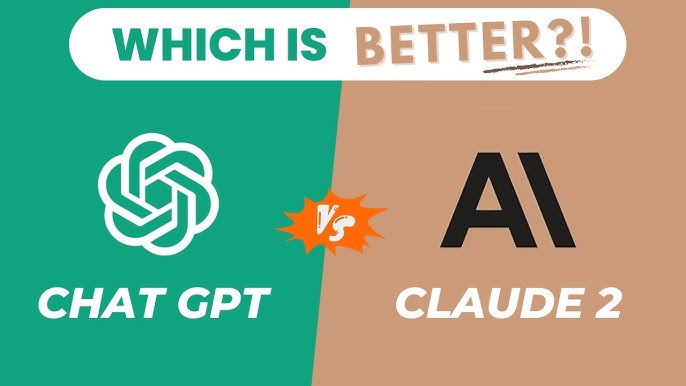
Writing emails sucks? Been there, felt that.
But you know those 1% folks who close big-ticket deals just through cold emails?
Guess they’re just lucky, huh?
But that’s not it, I am afraid.
They’ve got a process. A system that works.
And if you don’t have one yet—or want something that actually fits your business, this one’s for you.
In this blog, you’ll find 3 cold email frameworks that’ll help you land more replies and real deals.
But if you’re sending each one manually? That’s not sustainable.
That’s why outreach automation is your secret weapon.
Pairing these frameworks with an outreach automation system that works while you sleep, without losing that human touch.
So before we jump into templates, here’s why automation isn’t just a time-saver… it’s a game-changer.
Let’s get into it.
Why Outreach Automation Is the Real Secret Sauce
Cold emailing is hard enough. Doing it manually? That’s a full-time job.
When you use outreach automation tools (like Gro), you:
- Save time.
- Scale conversations.
- And grow—faster than ever.
Here’s what automation gives you:
- Consistent delivery:
Your messages reach inboxes on time, every time.
- Personalization at scale:
No more copy-pasting names. AI does the heavy lifting.
- Follow-ups that follow through:
Never forget to check in again.
- Data + insights:
See what works. Double down on it.
Tech founders need systems. And email outreach is no different.
So once you pick a cold email framework, plug it into an outreach automation workflow.
Let the system run.
And let your time focus on real conversations, not writing Subject lines at 2 AM.
Why do tech founders need cold emails?
Whether you’re a tech founder or a freelance service provider, cold emails aren’t just optional, they’re a must.
You’ve probably heard people say, “I’d never just reach out to someone I don’t know… especially for business.”
Cool.
But truth is: They’re the ones missing out on serious opportunities.
Money. Clients. Growth. All just sitting there… and they walk right past it.
You don’t want to be that person, right?
Most cold emails get a response rate of less than 2%.
なぜ?
Because most of them are written like bots.
- With zero thought
- Zero soul
- Zero understanding of who’s on the other side.
If you’re only using cold emails to close a deal, you’re already doing it wrong.
Before a deal happens, there’s a person, yep, a real human—on the other side of that inbox. So treat them like one.
Cold emails don’t have to be for selling, flip the script.
Use them to start conversations, building relationships.
And open doors to opportunities that don’t show up in your DMs by luck.
As a tech founder, you need people to know about your product.
You can’t just build something amazing and sit quietly, hoping someone finds it.
You need to tell them.
You need to reach out.
And sometimes, even offer a free trial to get your foot in the door.
Simple cold emails, with a human touch—can kickstart real, long-term partnerships.
And once you get the hang of it?
You’ll wonder why you didn’t start sooner.
Try it, you’ll be amazed how it works.
3 Cold email frameworks to help you soar
Now that you know why cold emails matter, let’s get into the how.
How do you actually send one that doesn’t land straight into the trash?
You need a system and some fancy jargon.
Just a few easy frameworks you can plug your message into—and actually connect with real people.
Let’s get into it:
1. The PC Formula
(Pain Point → Call to Action)
This one plays on something called open loops.
Basically, our brain remembers unfinished tasks more than the completed ones.
So you poke the pain, then leave a little gap… that they want to fill.
それは次のようになります:
Example 1:
Hey [Name],
Noticed your sales team has been struggling to keep up with replies—bummer.
I run a cold email automation tool that could make their manual work irrelevant and flood you with qualified meetings.
Want me to send over more info?
Example 2:
Hey [Name],
Your website’s speed is slower than 87.9% of your competitors (based on a quick test our dev team ran).
We’ve built an AI tool that helps teams like yours speed things up—fast.
Wanna try it out?
Example 3:
Hey [Name].
Most dev teams I’ve worked with waste 5–7 hours a week fixing bugs that should’ve been caught earlier.
Want to know how top SaaS teams cut that in half—without hiring or adding new tools?
Let’s chat. Happy to share what worked for them.
なぜこれが機能するのか:
- You talk directly to the decision-maker
- You show that you’ve done some homework
- You hit a nerve, and hint at the fix
Boom. One line for pain. One line for benefit. A CTA.
Personal and Powerful.
2. The P.E.C. Formula
(Pain/Desire → Evidence/Story → CTA)
This one works because you’re not rushing to sell, you’re starting with understanding.
You get into their head, talk about:
- What they want or fear
- Back it up with proof
- Then invite them in.
例:
Let’s say you’ve got an AI chatbot for sales. You’re pitching to a video messaging company.
Hey [Name],
I get that you want to build real, personal connections with your prospects—text-based emails just aren’t cutting it.
That’s why I built a tool that helps video-first companies like [Company] qualify leads faster—while keeping that human touch.
We just helped Mailchimp boost demo bookings by 23% with it.
Want me to send over a few slots for a quick chat?
Example 2:
Subject: “We launched. But no one showed up.”
That’s what a founder told me last month. They built a killer AI feature—but had no users to test it.
We helped them get 72 beta testers in 10 days—with just 3 emails.
Got a great product but no pipeline? I can send you the exact copy we used.
Want a look?
なぜこれが機能するのか:
- You hit the core desire or fear
- You show social proof (or a story)
- You make it easy to say yes
3. The P.P.C. Formula
(Pain → Partial Solution → Call to Action)
This one’s all about giving just enough to open the loop, but not so much that they don’t reply.
Example 1:
Hey [Name],
Noticed your team’s spending a lot on Clutch sponsorships—Did you know tweaking the copy on your profile daily can improve organic rankings?
I’ve helped clients drop their paid spend to zero—without losing a single lead.
Want me to share 3 more ideas? Let’s do a quick call this week?
Example 2:
Subject: Tired of chasing feedback after every sprint?
Hey [Name].
Most product teams struggle to get useful feedback fast during feature launches.
One thing that worked for us: embedding a 1-click feedback widget—right inside the feature.
Want the template? Happy to send it over.
なぜこれが機能するのか:
- You poke at something they’re already frustrated with
- You offer a hint at the fix (but save the full thing for the call)
- The CTA is clear and low-pressure
Pro tip:
Pair these frameworks with an automation tool like Gro—set up a 3-email sequence that triggers based on reply/no reply, and let it do the follow-up legwork for you.
Gro offers a 14-day free trial, check it out ここ.
Quick Recap
製品を成長させようとしている技術系の創業者であれば、おそらくこれらのコールド メール フレームワークを戦略の武器として備えておくべきでしょう。
以下の 3 つのフレームワークは、無視される状態から「電話を予約しましょう」状態に移行するのに役立ちます。
- PC – 痛み + CTA
- PEC – 痛み/欲求 + 証拠 + CTA
- PPC – 痛み + 部分的な解決策 + CTA
ぜひ試してみてください。自分の声に合わせて調整してみてください。
次に、それらをアウトリーチ自動化フローに組み込みます(Gro これを非常に簡単にして、システムに任せましょう。
人間らしさを保ちながら、スマートにスケールアップしましょう。
あなたの受信箱は後で感謝するでしょう
効果的なメールを書くためのベストプラクティス(実際に返信がもらえるメール)
はい、機能するフレームワークが手に入りました。
中には 38% の開封率を誇るものもあります。
しかしそれで十分でしょうか?
あまり。
最高のメールフォームを使っていても、相手に無視されてしまう可能性があります。
基本を見逃すと。
送信する前に必ず覚えておくべき、交渉の余地のない事項をいくつか挙げます。
基礎
- 魅力的な件名を書く:
件名がつまらなければ、誰もメールを開きません。簡単です。
- パーソナライズする:
名前だけではありません。まるでその人のために書かれたかのような印象を与えましょう。
最初のドラフトを作成するには、Claude や ChatGPT などのツールをいつでも使用できます。
しかし、送信する前に少し時間を取って調整しましょう。 あなた そしてあなたが構築しているブランド。
パーソナライゼーションはなぜ?大きな効果があります。
- あなたではなく、彼らについて話しましょう:
簡潔で関連性があり、顧客の苦痛や目標を中心とした内容にしてください。
- あなたに関する情報をオンラインで公開してください:
人々はあなたをGoogleで検索するでしょう。彼らが確実に信頼できる情報を見つけられるようにしてください。
- 名前と役職を正しく入力してください。
スペルミス?即削除。そんなの無理。
- 適切な人物(意思決定者)に連絡する:
「はい」と言えない人に売り込むのに時間を無駄にしないでください。
- 宿題をやりなさい:
彼らが何をしているのか、何が必要なのか、そして自分がどこに当てはまるのかを知ってください。
- 適合するかどうかを確認します (ICP チェック):
それがあなたの理想的な顧客プロファイルではない場合、気にする必要はありません。それは単なるノイズです。
- 外部メールでフォローアップ:
LinkedIn または X にコメントや DM を投稿すると、努力と意図が伝わります。
本音を語る
あるコールドメールが成功し、次のコールドメールが失敗するような要因は、無数にあります。
たとえ構造が優れていても。
私が学んだ効果的な方法は次のとおりです。
- 最初のメールはプレッシャーをかけすぎないようにしましょう。
過剰な売り込みはやめましょう。まずは、適切な相手と話しているかどうかを確認することから始めましょう。
そうでない場合は、誰がそうなのかを尋ねてください。
- 無駄をカットし、フックを維持します。
自分自身に問いかけてください。「これに返信するだろうか?」
答えが「いいえ」の場合は、書き直してください。
- タイミングは重要です:
時には、それはあなたのせいではない。適切なメッセージを間違ったタイミングで送っても、届かないことがある。
挑戦し続けてください。
最終リマインダー
結局のところ、コールドメールは、ある人から別の人への単なるメッセージです。
リアルに、人間らしく。
そして常にこう自問してください。
これに返信しますか?
もしそうなら、あなたは正しい道を歩んでいます。
いいえの場合、計画段階に戻ります。
また、うまく機能するものを見つけたら、それを一度送信して期待するだけではいけません。
→ システム化します。自動化します。
繰り返しの処理はテクノロジーに任せ、重要な会話に集中できます。
次のようなツール Gro 声が途切れたり、ボットのように聞こえたりすることなく、それを実現するのに役立ちます。
ぜひ試してみてください。何がうまくいくか確認し、使いながら改良していきましょう。
そして、それがうまくいくとしたら?それは複雑になります。
接続するとシステムが拡張されます。
結論
コールドメールを書くのは難しくありません。
独自のリズムがあるので、それを理解すれば大丈夫です。
アプローチをしっかりすれば、結果もしっかり出るようになります。
時には 10 通のメール、時には 1,000 通のメールが必要です。
しかし、それがクリックすると、あなたはそれを感じるでしょう。
なぜなら、コールドメールは効果があるからです。以上です。
だから今すぐ始めましょう。今日から始めましょう。
たとえ下書きとこれら 3 つのフレームワークだけしかなくても、始めるには十分すぎるほどです。
しかし、書くことだけに留まらないでください。
システム化、自動化。アウトリーチ活動はそのままに、成長に集中しましょう。
ここで Gro が登場します。
それは次のことに役立ちます:
- 適切な見込み客とつながる
- すべてのメッセージをパーソナライズ
- アウトリーチシーケンスを自動化する
- ボットのように聞こえることなくスケールする
PS また、 14日間の無料トライアル。 設定して、お気に入りのメールをアップロードして、 Gro 仕事をする。
最新のブログ投稿の更新情報を受け取るには購読してください









コメントを残す: